Books
Non-fiction
Books: People of Pastrami
Where have all the delis gone and How Jewish is Bob Dylan are two burning questions our reviewers address. On a more serious note, two writers discuss the hidden Ringelblum Archives and the people in the Warsaw Ghetto who documented their lives; another looks at a Polish survivor who defied the Germans as a partisan. Two other books look at Israel’s early days–and the time when Arabs helped Jews.
by David Sax. (Houghton Mifflin Harcourt, 319 pp. $24)
A few years ago, when I was editing articles for the Dining section of The New York Times, Ed Levine, a renowned fresser and the author of New York Eats (St. Martin’s Griffin), weighed in with an assessment of the city’s best pastrami sandwiches. One deli, Katz’s, on the Lower East Side since 1888 and the oldest in the world, won Levine’s praise, and on the day of publication Katz’s sent a shipment of pastrami sandwiches to our office. Although journalists are forbidden to accept gifts, we had no choice but to sample the smoky, smoking pastrami. Mamenu!
Now David Sax, a lifelong (b. 1979) deli enthusiast, has produced the mouth-watering Save the Deli. Where are the Jewish delis of yesteryear? And why are they disappearing? From entries, or entrées, spanning North America to South America to Europe, with heartburn in-between, Sax explores the shrinking world of smoked meats, kishke, knishes, karnatzel, pickles and more in a lively, detailed disquisition on the birth, growth and slow death of an endangered staple of the Western Jewish diet. Can pastrami—and corned beef and tongue, for that matter—be…er, preserved?
In a world agog over calories and cholesterol, Sax sounds the alarm for a distinctly Jewish cuisine assaulted by the postwar generation’s move from urban areas to the suburbs, assimilation, homogenization and changing taste. First on a blog he started three years ago and now in this book, Sax provides a Baedeker to delis big and small, the result of a lifetime of eating in hundreds of delicatessens and an extended sojourn across the United States.
Sax divides the delicatessen world into two parts: kosher delis, now primarily glatt kosher, and Jewish-style delis, which serve pastrami, corned beef and matza ball soup among other “Jewish foods” like bagels with cream cheese and lox, blintzes and rugelach and are, by far, the most numerous. Tracing the origin of smoked meat from Eastern Europe, where most Jews were too poor to afford red meat, Sax notes that pastrami got its start as a way of curing fatty poultry. When those Jews migrated to the New World, many became factory workers and needed to eat quickly, so pastrami or corned beef on crunchy, crusty rye slathered with mustard became a favorite lunch.
In 1931, an official survey determined that there were 1,550 kosher delis in New York. Today, there may be a few dozen scattered around the five boroughs, and more seem to disappear day by day (Deli Masters in Queens, along the Long Island Expressway? Gone). Owning a delicatessen is a difficult business, often involving several members of a family. There are long hours. The deli has to be in the right neighborhood, and neighborhoods change. Rents can skyrocket if the family does not own the building. The meats have to be steamed and pickled and spiced just so. And carving by hand, the preferred method, requires dexterity and skill. (Sax knows; he took a turn behind the sandwich counter at Katz’s.)
But there is hope, Sax says. Although delis in cities across the United States are becoming few and far between, the scene is thriving in Los Angeles. There are more delicatessens of a higher quality in L.A., he says, than anywhere else in America. One reason is because the delis are living in the present, not the past. They are bigger, more comfortable and serve better food than in any other city he visited. Also getting high marks is Montreal, where Sax grew up, but not Toronto, where he was born and where new waves of immigrants, from Asia and elsewhere, have supplanted the earlier waves of Jews.
While Save the Deli has an extensive Food and Yiddish Appendix (no mention of helzel or stuffed goose neck), a thorough index and a listing of delis in many cities, it is questionable whether a reader needs the names and addresses of all the extant delis in London, for example. And can we fault the author for not including the late Gaiety Delicatessen, a Times Square standout immortalized on the cover of a Gay Talese book about the glories of New York?
Deli enthusiasts have greeted the book heartily, and the author, it might be said, is on a roll. But will this be enough to reverse the trend? Almost all delis are individually or family owned and there is no effective trade group to trumpet the cause. There is a large divide between good intentions in a world of changing tastes and keeping complex ethnic businesses afloat. And unless an underwriter or philanthropist steps forward, I fear that the noble struggle will be all uphill.
And ponder this: There are no delis in Israel. —Stewart Kampel
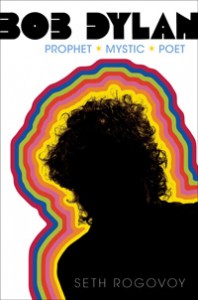 Bob Dylan: Prophet, Mystic, Poet
Bob Dylan: Prophet, Mystic, Poet
by Seth Rogovoy. (Scribner, 336 pp. $25)
There is a strong case to be made about the importance of Judaism to Bob Dylan’s music. But given his lifelong caginess about his faith, even his most astute biographers have given it short shrift. To make matters worse, his frequent references to Jesus (he even made a Christmas album last December) have thrown almost everyone, from his legions of fans to his own mother, Beatty Zimmerman, the one-time president of her local Hadassah chapter, for a loop. When she heard her son had become a “born-again” Christian in the late-1970s, she sent one of his childhood friends, an Orthodox dentist named Howard Rutman, to straighten him out. “Bob, what’s up with this?” Rutman said as he looked at the cross hanging from Dylan’s neck. “You’re Jewish.”
Indeed he is, and though he’s wrestled with that relationship throughout his life, Seth Rogovoy argues in his new book that Dylan’s never been in denial. Far from it: Bob Dylan: Prophet, Mystic, Poet shows that the artist’s music is infused with references to the Hebrew Bible and even suggests that Dylan is nothing short of a latter-day prophet. “Dylan’s work stems from the ancient tradition of Jewish prophecy–not in the sense of foretelling the future, but rather in the sense that a prophet, or in Hebrew, a navi, is a truth-teller to and an admonisher of his people,” Rogovoy writes.
Rogovoy is rigorous in his reading of Dylan’s lyrics, an astonishing number of which plainly reference either the Hebrew Bible or its people. Early songs like “Talkin’ Hava Negeilah Blues” (1962) and “Tombstone Blues” (1965), which retells the story of Samson, should settle any claim that Dylan tried to hide his Jewishness. Skeptics may point to the name change–from Robert Allen Zimmerman, born in Duluth, Minnesota, in 1941–but one need only look to the legions of performers who have done the same, none of whose Jewishness was ever denied. Asa Yoelson became Al Jolson, Nathan Birnbaum emerged as George Burns and, as Rogovoy amusingly writes, “was Allen Konigsberg really serious about passing for a non-Jew by renaming himself Woody Allen?” The bigger point is that Dylan’s public evasion of his Jewish identity says more about what it takes to succeed in the American mainstream than it does about his personal faith.
But in Rogovoy’s relish to reassert Judaism into Dylan’s biography he, too, often overstates his claim. You do not need to point out that “Dylan” is no more inauthentic a name than “Zimmerman,” which was likely given to a Ukrainian ancestor just two centuries ago to make the case against a Jewish disavowal. And worse, you don’t need to downplay Dylan’s blatant embrace of Jesus in the late 1970s to prove him more Jewish. A whole chapter is devoted to the dubious argument that Dylan’s embrace of Jesus says more about his Jewish identity since, in his lyrics, he seems to identify most with his suffering.
A more honest look might have viewed this phase as of a piece with Dylan’s rugged contrarianism, which happens to fit nicely with his quick return to an especially muscular Jewish identity. By 1983, Dylan was more or less through with wholesale Christian beliefs and back praising something that looks more like the Jewish God. A few years studying with Chabad rabbis and frequent trips to Israel seem to have reinforced whatever identity was briefly doffed. And in his first post-Christian album, Infidels, there’s even a thinly veiled hymn to the Jewish people: “His family scattered, his people hounded and torn,/ He’s always on trial just for being born.” What’s more Jewish than that? —Eric Herschthal
Eric Herschthal is a staff writer for The Jewish Week and a regular contributor to The New York Observer. His writing has appeared in The New Republic, The Forward, The Miami Herald and elsewhere.
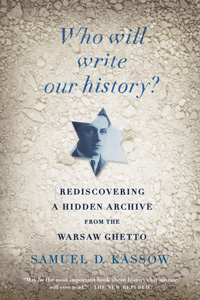 Who Will Write Our History? Rediscovering a Hidden Archive From the Warsaw Ghetto
Who Will Write Our History? Rediscovering a Hidden Archive From the Warsaw Ghetto
by Samuel D. Kassow. (Vintage, 523 pp. $16.95)
Emanuel Ringelblum, a Polish Jewish historian who was murdered by the Germans in March 1944, was dedicated to the task of chronicling the relations between Poles and Polish Jews. His singular purpose in his early efforts was to establish, with absolute historical accuracy, that the Jews of Poland were a nation within Poland and to provide the first written record of their lives. After the Germans created the Warsaw Ghetto, Ringelblum, impelled by the certainty that Jewish survival was tenuous at best and that certain death of the entire community was highly probable, undertook the recording of his life within the confines of the ghetto.
Initially, he worked alone. But as the war progressed and the situation deteriorated, he joined forces with other Jewish historians, academics, and individuals from a variety of disciplines, all of whom were herded into the ghetto. This cadre of thinkers and writers were determined to create a legacy of truth for generations to come. They created an archive that was called, with appropriate irony, Oyneg Shabbos (Celebration of the Sabbath). It was not a cohesive group, consisting as it did of a squabbling intelligentsia that included Marxists, Bundists, and Zionists whose efforts might have been even more successful had they closed ranks in the face of a common enemy. And yet their achievement was remarkable.
They collected whatever they could find, no matter how trivial and routine, and ingested the raw material of daily life into history, writing essays, descriptive compositions and short monographs that captured the searing event; they provided a stark account of quotidian cruelty, rendered all the more painful by the mundane details. Fully aware that time was against them, they ultimately devoted their efforts to creating and preserving the archive itself, burying their findings in milk bottles and tin cans. It was, in all probability, their hope that the actual writing of the ghetto’s history, that abyss of horror culminating in tragedy, would be completed by a compassionate historian writing in more fortunate times.
Such a historian is Samuel D. Kassow, Charles Northam Professor of History at Trinity College in Hartford, Connnecticut, the author of Who Will Write Our History? Rediscovering a Hidden Archive From the Warsaw Ghetto. The query that gives the book its title is more than answered by the painful text of the book itself. The martyred historians achieved their purpose. It is they who wrote the history that Kassow has transformed into a compelling and significant narrative, a tribute to the courage and determination of the doomed archivists.
The facts are painfully stark. The Germans starved the ghetto Jews and drove them mad. They subsisted on 84 calories a day supplemented by food smuggling. Streets were constructed to lead pedestrians into sheer walls. The community was supposedly self-governed by a Judenrat and a Jewish police force, both of whom were as brutal as the Germans and corrupt as well. The Polish Home Army, whose numbers might have been increased by the 300,000 Jews imprisoned in the ghetto, rejected that opportunity and allowed the Germans to carry out the slaughter without interference.
The Oyneg Shabbos caches were discovered in 1946, and in this seminal work, Kassow preserves their message, emphasizing the futility of thought without action. The hidden archive is a grim reminder, particularly relevant in our own time, that faith and reason are no match for primordial hatred blindly intent on murder and destruction. —Sheldon Horowitz
edited by Robert Moses Shapiro and Tadeusz Epsztein. (Indiana University Press, 539 pp. $89.95)
After you read Samuel Kassow’s book Who Will Write Our History? Rediscovering a Hidden Archive From the Warsaw Ghetto (Vintage), you can examine this catalog and guide to the archive. Though this volume, published in association with the United States Holocaust Memorial Museum and the Jewish Historical Institute in Warsaw, is best suited for libraries and research centers, it is impressive to see the immense amount of organization and collection that went on in Warsaw.
That work was to be found not only in the Oyneg Shabes Archive organized by Emanuel Ringelblum, a Polish Jewish historian, but in groups that were “embedded in the networks of the Aleynhilf at refugee points, soup kitchens, house committees and clandestine schools.”
These networks would provide information, documents and testimonies for the archive, Kassow writes in the introduction. He explains how Oyneg Shabes grew out of the prewar practice of zamling, in Yiddish, the collection of documents with the aim of fixing, writing and understanding of history as a new pillar of Jewish consciousness. The archive is significant as a documentary collection for the history of the annihilation of Jews on Polish territory during World War II and includes personal accounts and testimonies, letters sent into the Warsaw Ghetto, monographs, underground publications, literary works created there and more. It was intended to be and, in part, became a reservoir of materials serving research and scholarly publications, for preparation of materials for the contemporaneous underground press and for informing the world about the situation of the Jewish population.
The actual archive is housed in the collections of the Jewish Historical Institute in Warsaw. Hidden in three parts in metal boxes and large metal milk canisters (the majority of the items in the collection are from 1939 to 1943), only Ringelblum I and II were later unearthed. The third part was never found. The decision to bury the archive was made in August 1942, when the ghetto’s liquidation began. Ringelblum I was found on September 18, 1946. Ringelblum II, hidden in February 1943, was found December 1, 1950.
Though the majority of the book is a database of the collection, included are 90 black-and-white photos documenting the discovery of the archives. There are pictures of the members of the Oyneg Shabes group, life in the ghetto, artwork, poetry, handwritten and typewritten testimony, posters and postcards. It is an altogether remarkable testimony. —Zelda Shluker
by Frank Blaichman. (Arcade, 224 pp. $25)
Can here be too many books about the Holocaust? In my view, there can never be enough. If each life has its own unique tale, then almost six million stories were never brought to light. And now, more than 60 years after the Shoah, when so many thousands of other remembrances have been lost to time, new memories surface–and the world is better for it.
Frank Blaichman was 16 years old when German forces invaded Poland, and his painstaking memoir provides renewed testament to the Jewish resistance in Poland, further ammunition against Holocaust deniers and new evidence that not all Jews marched silently into that foreboding nightmare.
Thanks to the recent movie Defiance, which chronicled the Jewish partisan movement in Belarus led by the Bielski brothers, we know of the courage and sacrifices made by these proud and militant Jews, hiding, fighting and living in dense forests. In Poland, the partisan activity started rather late in the Nazi occupation, partially because most of the Jews who tried to escape to the few forested areas were murdered by local fascists or the anti-Semitic underground Polish militia. By the time the partisans became armed and strong enough to fight, Jews in the area had already been wiped out.
Such information was unknown and irrelevant to those who saw their friends and relatives shot and killed for an “offense” like preparing kosher meat or carted away to become slave laborers. When the roundups and deportations started in earnest in 1942 in his hometown of Kamionka, 12 miles north of the Polish city of Lublin, “Skinny Frank” Blaichman, as he was known, decided not to go quietly. Making his way to a nearby forest to find the underground bunkers of Jews who had already escaped, Blaichman and his fellow Jews formed a force dedicated to fighting the Germans and any collaborators while hiding and sheltering those who were unable to carry weapons.
Because they were not far from home, the partisans knew the territory intimately (the Germans did not), and because they were in constant fear of discovery, they were always on the move. Sir Martin Gilbert, author of 80 books including The Holocaust: The Jewish Tragedy, has supplied a helpful introduction and maps that follow the partisans’ travel and wanderings.
Skinny Frank eventually became leader of the ragtag militia in the forest, and their missions, described in detail, are suffused with danger and drama. Once, investigating the sound of German voices not far from their encampment, Blaichman and a few men returned to find that Germans had attacked their bunkers and killed 75 compatriots. “We swore that we would avenge the death of our comrades,” Blaichman said. Although the group was reduced to 25, they did not give up. Polish collaborators, who got bonuses from the Germans for exposing each Jew, were a primary target. When caught, the collaborators were executed.
The Jewish partisans made the forests their home for two years. Food, of course, was a constant problem. When entering a village store or farmhouse in search of food, Blaichman related, he and his group tried to be as courteous as possible. But where courtesy failed, the threat of force would succeed. “We went into a Polish grocery,” Blaichman recalled. “We were polite, we said ‘Good evening. Please, we would like to buy bread, butter, some chicken.’ They chased us away with axes and pitchforks … Later, when we acquired firearms we returned. We did not point them at anyone, but they could see we were armed. They said, ‘Gentlemen, how can we help you?’–Suddenly, we were ‘gentlemen.’”
As the partisans grew in number and acquired more weapons, they joined with Polish partisan units to fight the Germans. In May 1944, they took part in a major battle against German SS and Wehrmacht battalions and German Air Force planes sent to destroy them. One of the most moving passages in the book describes the sudden appearance of large numbers of German troops and tanks fleeing westward to avoid the advancing Red Army. For several hours, the Soviet forces pummeled the retreating Germans. Finally, Blaichman saw a Russian colonel on horseback. “When he greeted us in Russian, I knew the worst was over,” Blaichman recalls. “We had survived.”
Since English is not his native language, Blaichman wrote the book with assistance over a period of years, and he gives the names–and missions–of many of those who served with him in the forests. One of his unsung collaborators was his wife, Cesia, a fellow partisan; they eventually settled in the United States. Later, they helped organize the Jewish Fighters Monument at Yad Vashem in Jerusalem.
According to Blaichman, the process of describing the moments of grief and depression were painful. But he has added an important document to the horrors of history. —Stewart Kampel
by Hillel Cohen. (University of California Press, 352 pp. $45)
The secret is out. How did brave little Israel with a Jewish population of about 600,000 in 1948 manage to defeat the attacking armies of Arab countries with a hundred times the number of residents?
The Israelis had lots of help, of course. They received Russian planes via Czechoslovakia. American air force veterans volunteered to fly them. Most of Europe and North and South America backed them up with arms and volunteers, despite the official American embargo.
The secret of Israel’s success in the 1948 war was good intelligence. There were Arab collaborators and there were Arab cooperators. Hillel Cohen’s Army of Shadows, based on the hitherto secret archives of the Haganah and the Israel Army, tells their story.
Most people are unaware that the Palestinians were never united behind the mufti of Jerusalem, Haj Amin Al-Husseini. The book opens with a telegram that the Arab mayor of Haifa, Hassan Shukri, sent in 1921 to London, where a delegation of Palestinians had arrived to ask Great Britain to back away from the Balfour Declaration. He wrote: “We strongly protest the attitude of the said delegation regarding the Zionist question…. We consider the Jews as a brotherly people sharing our joys and troubles and helping us in the construction of our common country. We are convinced that without Jewish immigration and financial assistance there would be no future development in our country as may be judged by the fact that…towns inhabited in part by Jews such as Jerusalem, Jaffa, Haifa and Tiberias are making steady progress while Nablus, Acre and Nazareth where no Jews reside are steadily declining.”
Facts and logic were insufficient to overcome the Muslim fanaticism engineered by the mufti in the anti-Jewish riots in 1929 and 1936.
Still, the Arab opposition to the mufti was strong, though it was met by assassinations of leading opposition figures and the bombing of merchants who refused to contribute to the Husseinis.
I was surprised to learn that Fakhri Nashishibi, my drinking partner in 1935 at the King David bar when I was a reporter on the Palestine Post, had organized the Defense Party in 1936 in opposition to the mufti. In June 1937, Fakhri miraculously escaped the first attempt to assassinate him. He raised his arm to scratch his head and the bullet aimed at his head lodged in his arm.
In September 1938, in response to the murder of his chief ally in Ramallah, Fakhri organized a fighting force, called “peace units” by the Jews and the British because they assisted in subduing the Arab rebels in the Galilean hills.
The mufti didn’t succeed in murdering Fakhri until 1941, when a young Husseini follower killed him in Baghdad.
This book details the activities of Arabs who were friendly to the Jews and sold them land. They formed the base on which Israel Army intelligence built a strong group of Arab informants in 1948.
It is still operating, stronger than ever, in 2010. When you read that a precision bomb dropped in Gaza killed three leaders of Islamic Jihad, it was not an accident: An Arab collaborator, on the ground, pinpointed their exact location. —J. Zel Lurie

The Making of Modern Israel: 1948-1967
by Leslie Stein. (Polity Books, 340 pp. $25)
The scenario goes something like this: Israel can’t seem to get a fair hearing in the United Nations and faces mounting pressure to make some kind of territorial compromise. Meanwhile, the country’s response to terror attacks repeatedly generates criticism abroad and serious debate at home. Sound familiar?
Leslie Stein is actually describing the Middle East of the 1950s, rather than current events, in his new history of the modern state’s early years. If nothing else, this work serves as a sobering reminder that while headlines change, the story in the Middle East repeats itself.
Despite Israel’s looming Iranian nuclear threat and a militant Hamas and Hezbollah perched at its border, the book makes it clear that Israel today is in far better position than it was then, economically, militarily and even diplomatically. Back then, bandits offedayeen seemingly crossed into Israel at will to kill civilians, and the Israeli Defense Forces seemed powerless to deter these attacks. Israel, far from a first-world country at the time, could barely find food and housing for the masses of new immigrants who had arrived. And without the solid backing of the United States, Israel had few if any friends in a time of crisis.
Stein, senior research fellow at Macquarie University in Australia, has written a book that is admittedly short on new material or research and is instead a readable, relatively brief synthesis of existing historiography. The result can serve as a refresher course for more knowledgeable readers and a sound introduction for novices. The book’s relative brevity is both its biggest strength and weakness. At times it impressively boils down events to their essence; at others, the synopsis feels truncated, the analysis lacking.
While Stein takes pains to declare himself a dispassionate historian, he is clearly making an argument. By focusing on the years before Israel conquered the West Bank, Gaza and the Golan, Stein illustrates that Israel faced diplomatic isolation and Arab intransigence well before it ever became an occupying power. If these pages remind any current or future policymakers of that fact, then more power to the author.
In such a short work, Israel’s founding generation of leaders, including David Ben-Gurion, Moshe Dayan, Golda Meir and Levi Eshkol, come through in snapshots rather than fully developed portraits. Not surprisingly, Ben-Gurion surfaces the most as the closest figure Israel had to a George Washington. But Washington famously gave up power after eight years. From 1948 to 1963, Ben-Gurion led the country for all but two years: Stein depicts Ben-Gurion as a leader who tried to hang on for too long. Did this ultimately have a negative impact on the fledgling democracy? Does the father of Israeli democracy bear some responsibility for its precariousness? Stein’s failure to ask the question seems like one instance where less really does mean less. —Bryan Schwartzman










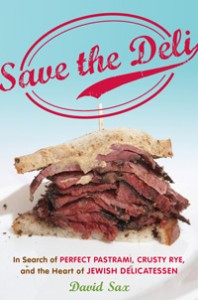
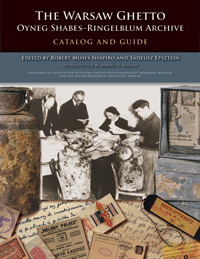
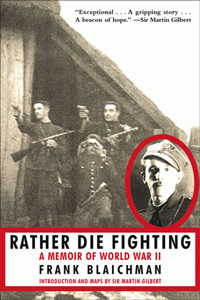
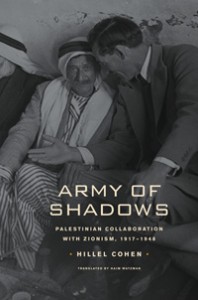
 Facebook
Facebook Instagram
Instagram Twitter
Twitter
Leave a Reply